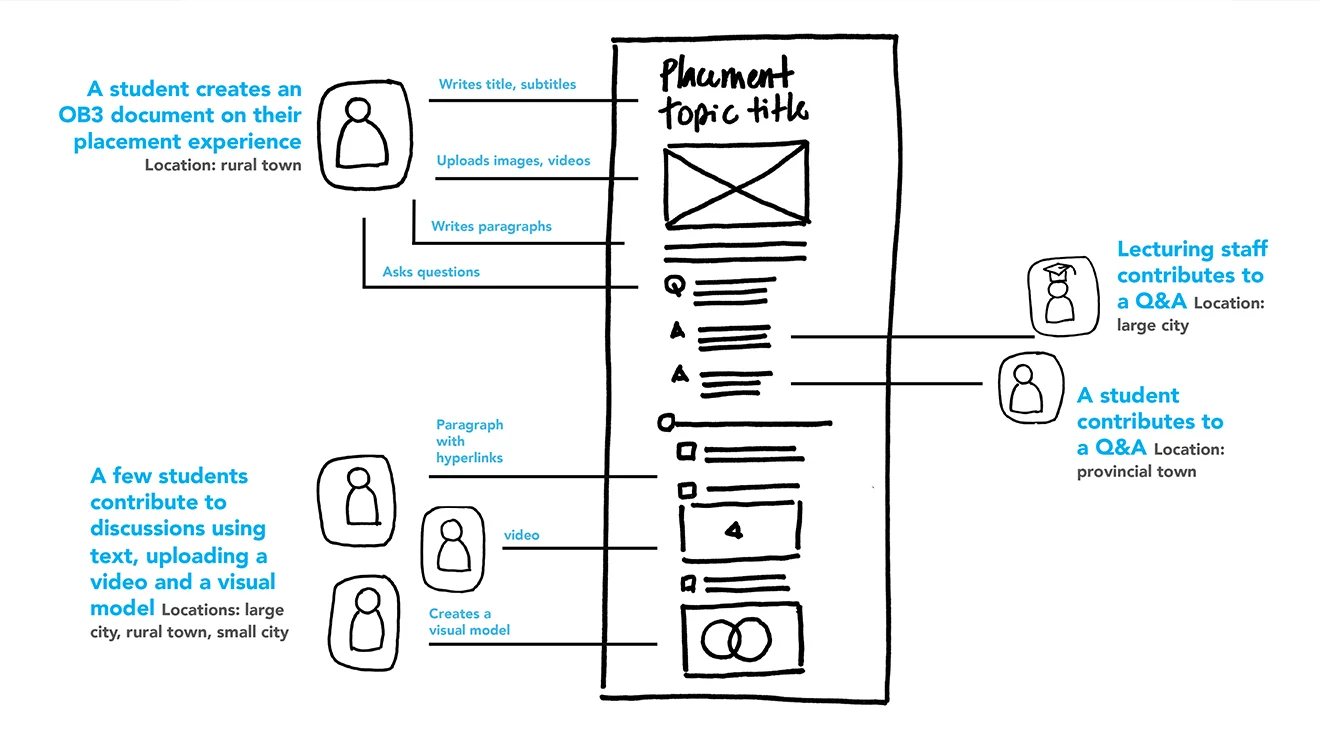
In this video, students on work placement all over the country use OB3 to create media-rich documents about their individual placement experiences. Students and lecturing staff contribute adding reflections, suggestions, conceptual models and more.
OB3 collaboration from OB3 Apps on Vimeo .

The Midwifery Programme at Ara Institute of Canterbury Te Pūkenga has been using OB3 for keeping students connected and engaged during Midwifery practice placements in hospitals, communities and virtual reality
As part of a project course in the final year, students are out on a 14-week placement all over New Zealand. Students are divided into groups of 5 to 7 to engage in this forum where they write about their midwifery practice experiences and issues that have emerged from that placement. Their introductory posts begin broadly and then narrow down as each student identifies a particular topic related to that practice. This takes them on journey exploring different facets related to their specific topic area. They then create their own OB3 documents with embedded discussions, as illustrated in the video above.
In their practice topic, students explore the relevant research, guidelines for practice, and midwifery frameworks in relation to their chosen practice topic. Students critique the evidence from the literature and begin to write this up as summary report. During the development of the practice topic summary, the other students in the group are expected to contribute to each other’s topic documents. They add discussion points, questions, and share their own practice experiences related to the topic. Through this process, they are learning from each other. Finally, students submit a summary report as part of their summative assessment.
An essential element that makes this learning environment a success is that students have the opportunity to share and discuss their own experiences in relation to the other students’ chosen practice topic. This enables them to compare and contrast, evaluate and critique both their practice experiences and the evidence that is available. This facilitates knowledge integration and the development of a community of practice for the students. Ultimately, students come up with their own ideas about how they would practice. The student-led general discussions of practice experience allow them to begin to synthesise knowledge – the act of putting parts together to form a whole, which is an element in Bloom’s Taxonomy.
Excerpted from: Gomez et al. (2022)